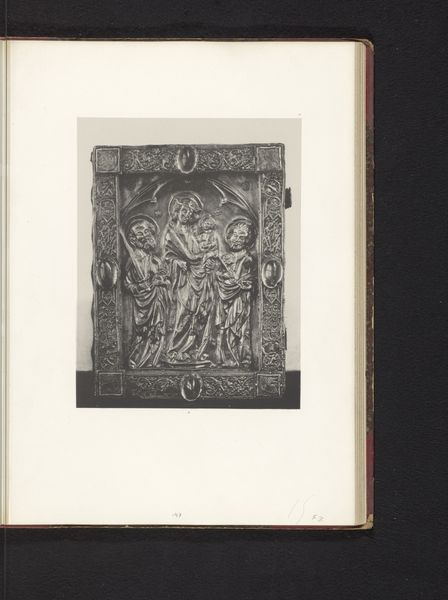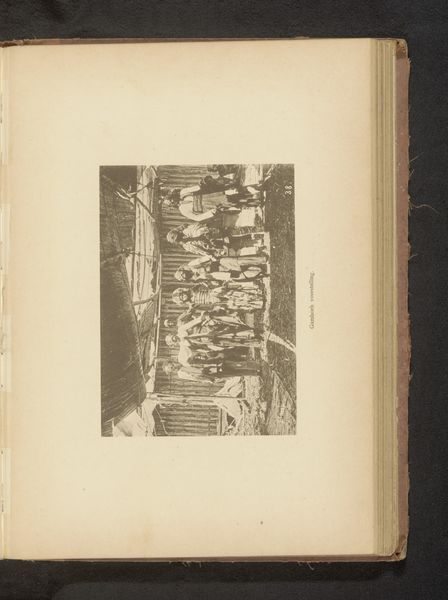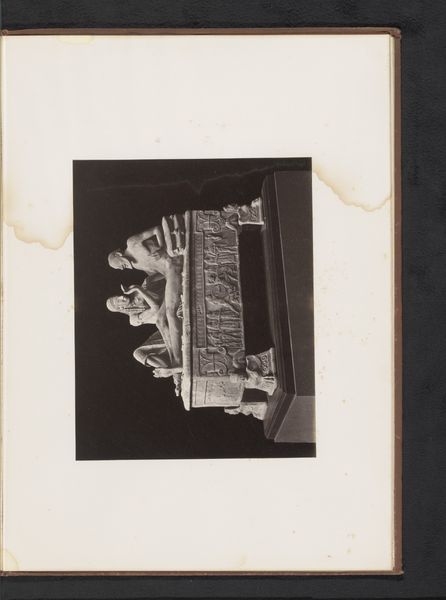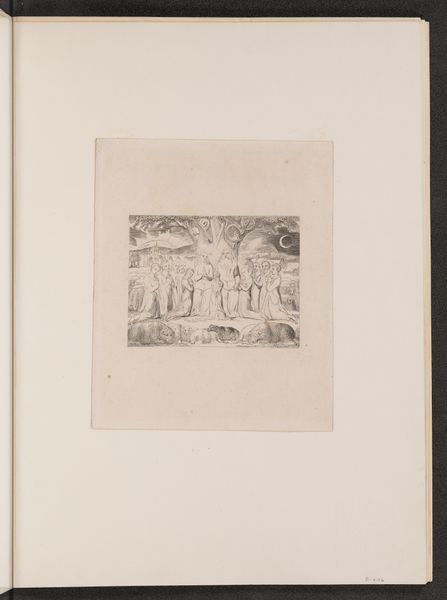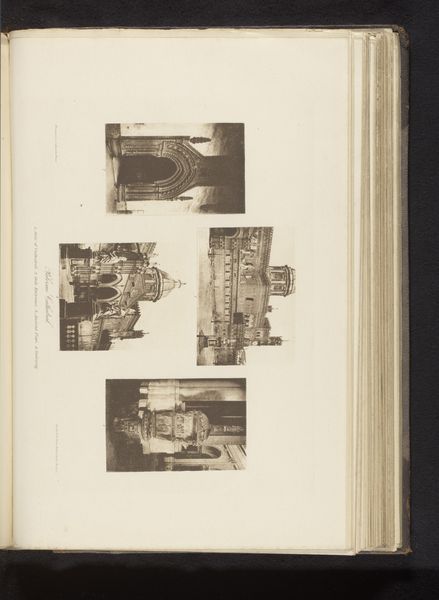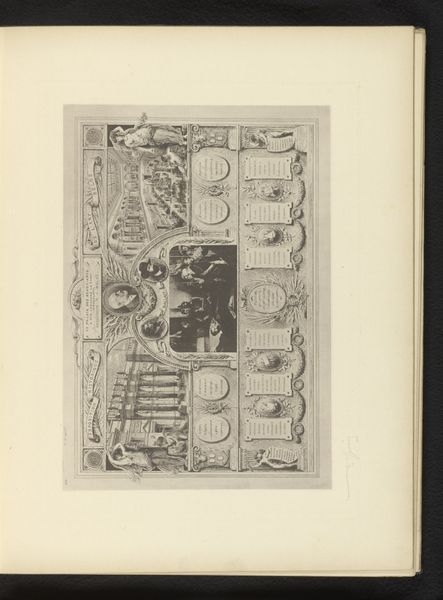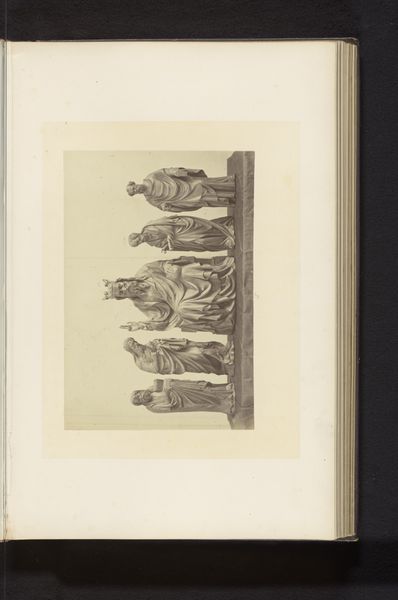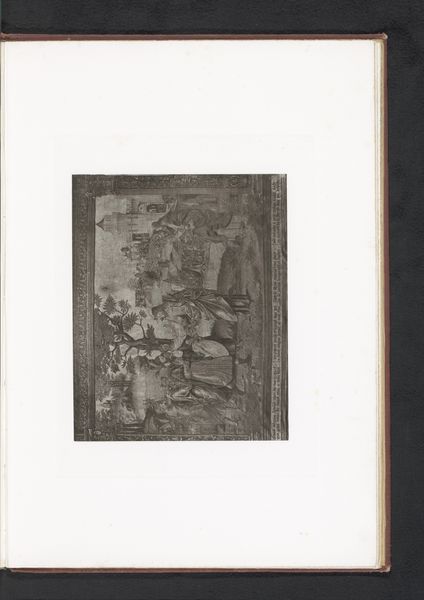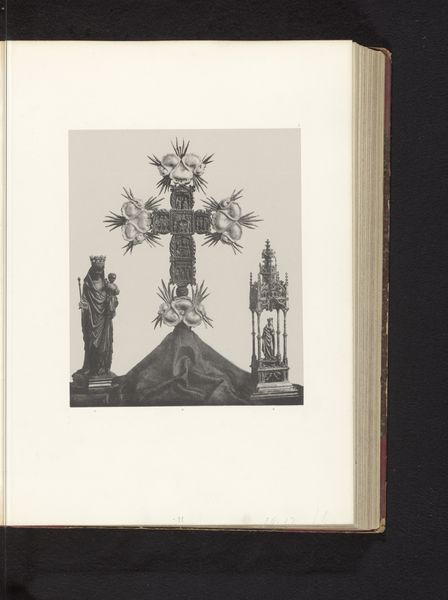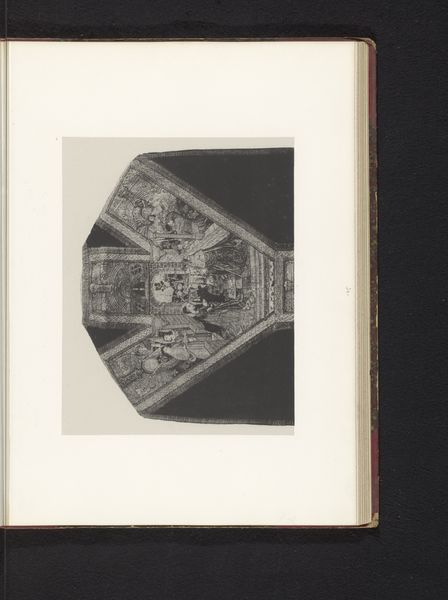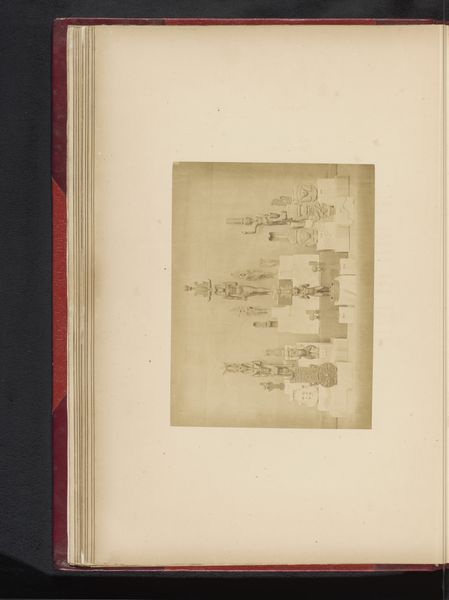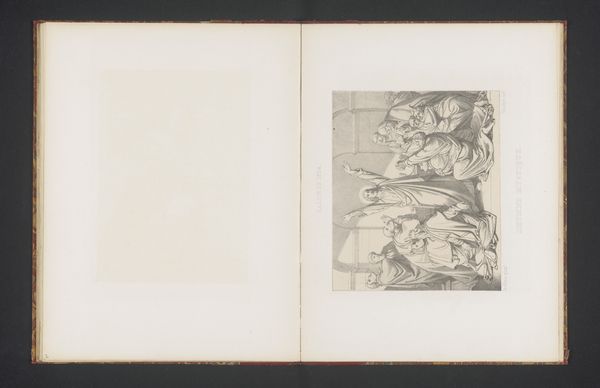
Drieluik van ivoor met voorstellingen uit het Nieuwe Testament en drie andere religieuze objecten van ivoor, opgesteld op een tentoonstelling over religieuze objecten uit de middeleeuwen en renaissance in 1864 in Mechelen before 1866
0:00
0:00
drawing, print, sculpture, engraving, ivory
#
drawing
#
medieval
# print
#
sculpture
#
engraving
#
ivory
#
miniature
Dimensions: height 210 mm, width 160 mm
Copyright: Rijks Museum: Open Domain
This photograph by Joseph Maes captures an ivory triptych alongside other religious objects in an 1864 exhibition in Mechelen. The triptych, with its intricate carvings depicting New Testament scenes, speaks to ivory’s inherent qualities. Its smooth, dense surface allows for incredibly fine detail, which skilled artisans would have achieved through patient carving, engraving, and polishing. The creation of these objects would have taken considerable time and skill, representing a significant investment of labor. Ivory, sourced from elephant tusks, was a prized material, linking this object to colonial trade routes and the exploitation of both animal and human resources. The fact that Maes chose to photograph these objects at an exhibition is significant. It speaks to a 19th-century fascination with the medieval and Renaissance periods, and a desire to categorize and display objects as representatives of specific historical moments. This act of display reinforces the cultural value placed on these objects. Considering the material, the processes involved, and the social context, we can appreciate how this triptych bridges the realms of artistry, labor, and cultural history.
Comments
No comments
Be the first to comment and join the conversation on the ultimate creative platform.
